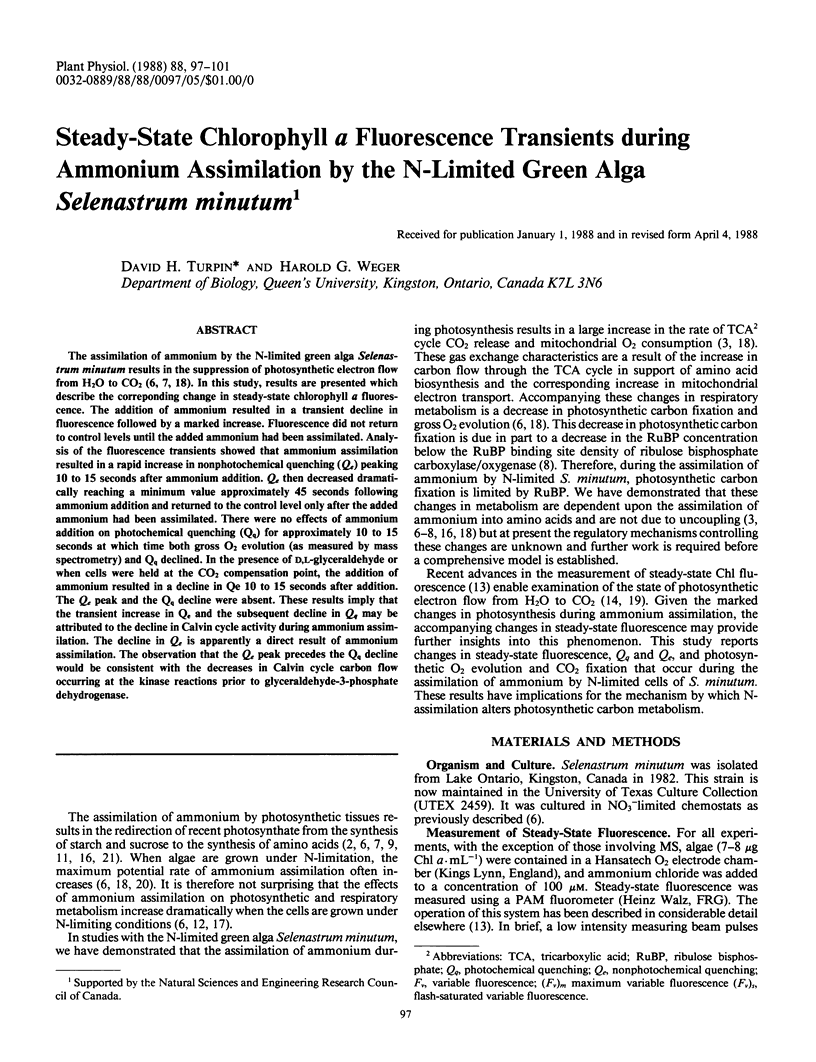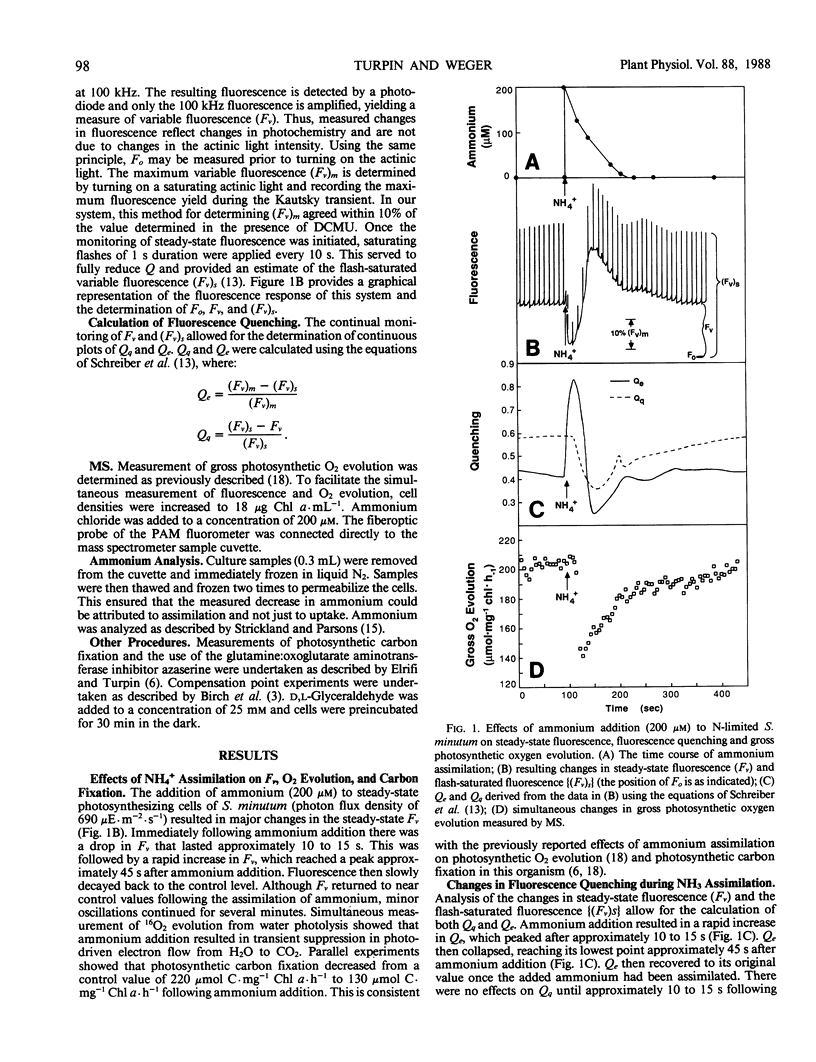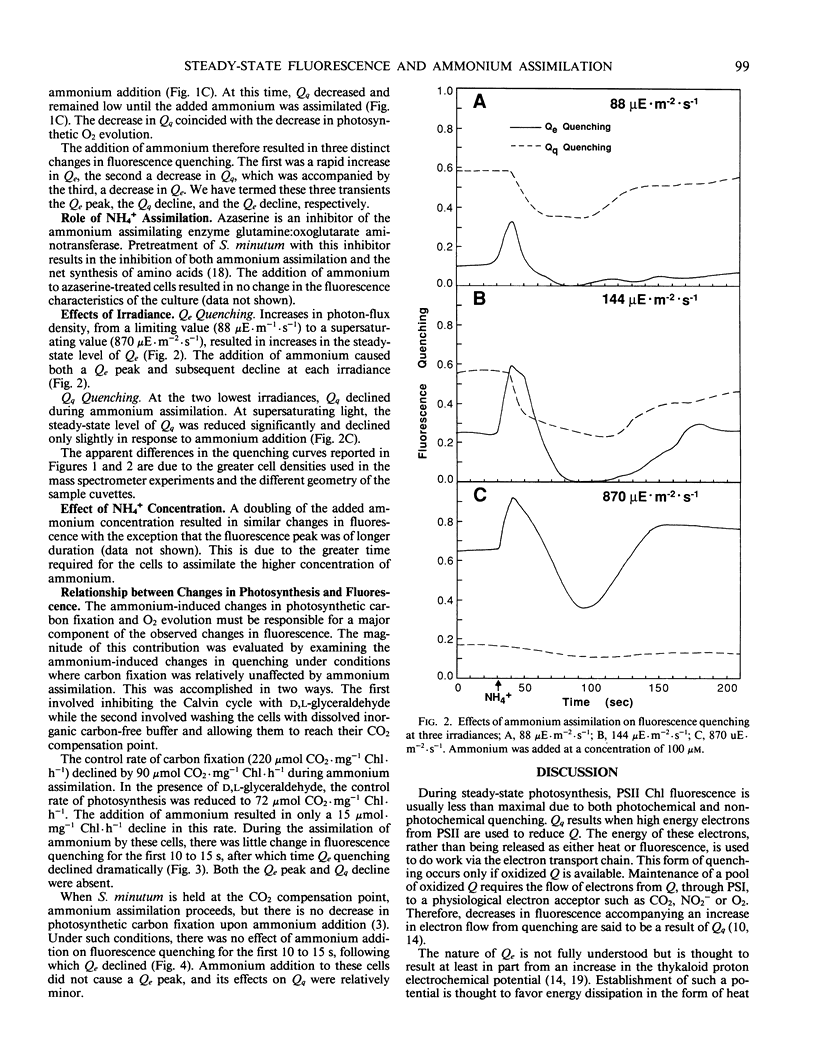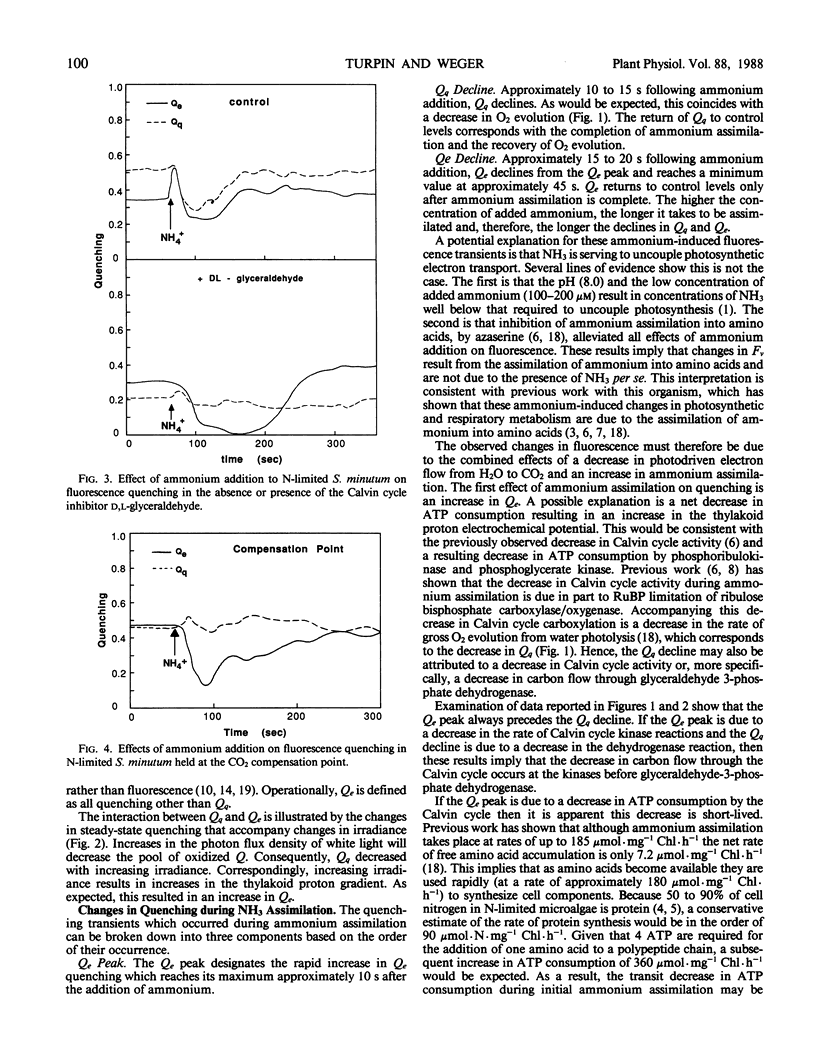Abstract
The assimilation of ammonium by the N-limited green alga Selenastrum minutum results in the suppression of photosynthetic electron flow from H2O to CO2 (6, 7, 18). In this study, results are presented which describe the correponding change in steady-state chlorophyll a fluorescence. The addition of ammonium resulted in a transient decline in fluorescence followed by a marked increase. Fluorescence did not return to control levels until the added ammonium had been assimilated. Analysis of the fluorescence transients showed that ammonium assimilation resulted in a rapid increase in nonphotochemical quenching (Qe) peaking 10 to 15 seconds after ammonium addition. Qe then decreased dramatically reaching a minimum value approximately 45 seconds following ammonium addition and returned to the control level only after the added ammonium had been assimilated. There were no effects of ammonium addition on photochemical quenching (Qq) for approximately 10 to 15 seconds at which time both gross O2 evolution (as measured by mass spectrometry) and Qq declined. In the presence of d,l-glyceraldehyde or when cells were held at the CO2 compensation point, the addition of ammonium resulted in a decline in Qe 10 to 15 seconds after addition. The Qe peak and the Qq decline were absent. These results imply that the transient increase in Qe and the subsequent decline in Qq may be attributed to the decline in Calvin cycle activity during ammonium assimilation. The decline in Qe is apparently a direct result of ammonium assimilation. The observation that the Qe peak precedes the Qq decline would be consistent with the decreases in Calvin cycle carbon flow occurring at the kinase reactions prior to glyceraldehyde-3-phosphate dehydrogenase.
Full text
PDF




Selected References
These references are in PubMed. This may not be the complete list of references from this article.
- Azov Y., Goldman J. C. Free ammonia inhibition of algal photosynthesis in intensive cultures. Appl Environ Microbiol. 1982 Apr;43(4):735–739. doi: 10.1128/aem.43.4.735-739.1982. [DOI] [PMC free article] [PubMed] [Google Scholar]
- Birch D. G., Elrifi I. R., Turpin D. H. Nitrate and Ammonium Induced Photosynthetic Suppression in N-Limited Selenastrum minutum: II. Effects of NO(3) and NH(4) Addition to CO(2) Efflux in the Light. Plant Physiol. 1986 Nov;82(3):708–712. doi: 10.1104/pp.82.3.708. [DOI] [PMC free article] [PubMed] [Google Scholar]
- Elrifi I. R., Holmes J. J., Weger H. G., Mayo W. P., Turpin D. H. RuBP Limitation of Photosynthetic Carbon Fixation during NH(3) Assimilation : Interactions between Photosynthesis, Respiration, and Ammonium Assimilation in N-Limited Green Algae. Plant Physiol. 1988 Jun;87(2):395–401. doi: 10.1104/pp.87.2.395. [DOI] [PMC free article] [PubMed] [Google Scholar]
- Elrifi I. R., Turpin D. H. Nitrate and Ammonium Induced Photosynthetic Suppression in N-Limited Selenastrum minutum. Plant Physiol. 1986 May;81(1):273–279. doi: 10.1104/pp.81.1.273. [DOI] [PMC free article] [PubMed] [Google Scholar]
- Kanazawa T., Kirk M. R., Bassham J. A. Regulatory effects of ammonia on carbon metabolism in photosynthesizing Chlorella pyrenoidosa. Biochim Biophys Acta. 1970 Jun 30;205(3):401–408. doi: 10.1016/0005-2728(70)90106-4. [DOI] [PubMed] [Google Scholar]
- Mohamed A. H., Gnanam A. A possible mechanism of ammonium ion regulation of photosynthetic carbon flow in higher plants. Plant Physiol. 1979 Aug;64(2):263–268. doi: 10.1104/pp.64.2.263. [DOI] [PMC free article] [PubMed] [Google Scholar]
- Weger H. G., Birch D. G., Elrifi I. R., Turpin D. H. Ammonium Assimilation Requires Mitochondrial Respiration in the Light : A Study with the Green Alga Selenastrum minutum. Plant Physiol. 1988 Mar;86(3):688–692. doi: 10.1104/pp.86.3.688. [DOI] [PMC free article] [PubMed] [Google Scholar]


